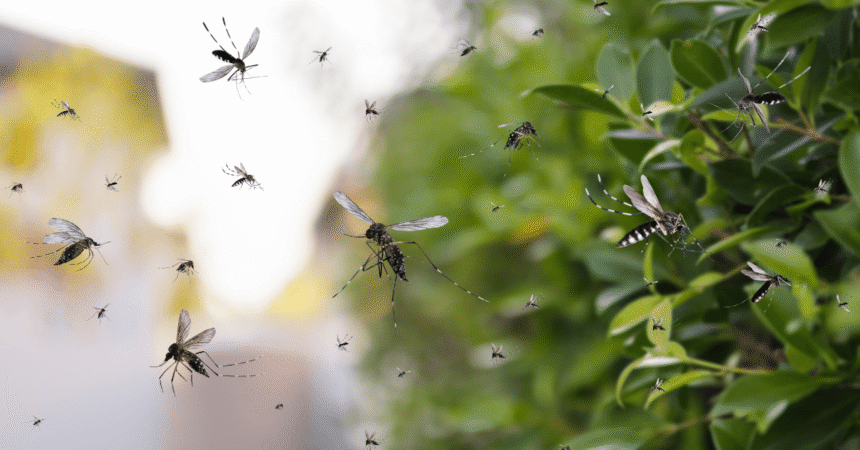As Pakistan transitions out of the monsoon season, public health officials are raising alarms over a potential surge in dengue fever cases. The Pakistan Meteorological Department (PMD) has recently issued a warning indicating that an outbreak is likely to intensify across ten major cities by October. The cities identified as at-risk include Karachi, Lahore, Peshawar, Rawalpindi, Islamabad, Hyderabad, Faisalabad, Sialkot, Larkana, and Multan.
Understanding Dengue Fever
Dengue fever is a mosquito-borne viral infection that poses significant health risks, particularly in tropical and subtropical regions. It is transmitted primarily by the Aedes aegypti mosquito, which breeds in stagnant water. The symptoms can range from mild fever, headache, and joint pain to severe conditions like dengue hemorrhagic fever and dengue shock syndrome, which can be life-threatening.
The dengue virus has four serotypes, and infection with one type does not provide immunity to the others. This characteristic complicates the management of outbreaks, as individuals can contract the disease multiple times throughout their lives.
Recent Trends and Statistics
The current dengue outbreak in Pakistan is alarming, with hundreds of cases reported weekly, especially in Punjab. Since mid-September, health authorities have observed a steady increase in infections, which correlates with the onset of the monsoon season. The PMD has noted a pattern over the past decade, revealing that significant upticks in dengue cases tend to occur between September 20 and December 5, after monsoon rains.
In Karachi, hospitals are already reporting a surge in patients exhibiting symptoms consistent with dengue fever. Local health officials are working overtime to manage the influx of cases, often struggling with limited resources and overcrowded facilities. In Punjab, which has historically been one of the hardest-hit regions, the situation is particularly critical, with health facilities overwhelmed by the number of patients.
Statistical Overview
According to recent health department statistics, the number of dengue cases has increased significantly compared to previous years. For instance, in 2022, the total number of reported cases was around 5,000 by the end of the year, while projections for 2023 are already nearing that number as of late September. This alarming trend has led health officials to declare a public health emergency in some areas.
The PMD’s warning about the impending spread of dengue fever is based on the correlation between climatic conditions and the proliferation of the dengue virus. Research indicates that the dengue virus becomes more active when temperatures range between 26°C and 29°C and humidity levels hover around 60%. These weather conditions create an ideal breeding environment for the Aedes mosquitoes, which are prevalent in urban settings.
The Role of Weather Patterns
The PMD emphasizes the crucial interplay between weather patterns and the spread of dengue. Recent climatic data shows that the current humidity and temperature ranges are conducive to the proliferation of dengue-carrying mosquitoes. Additionally, areas affected by recent rains are at heightened risk; standing water from rainfall creates ideal breeding sites for mosquitoes, increasing the likelihood of dengue transmission.
After rainfall events, stagnant water collects in various locations—such as open containers, discarded tires, and clogged gutters—creating perfect conditions for mosquito breeding. In urban areas with high population densities, these conditions are further exacerbated by inadequate waste management and sanitation infrastructure.
The Impact of Climate Change
Climate change is also playing an increasingly important role in the dynamics of dengue outbreaks. Rising global temperatures and shifting weather patterns may expand the geographical range of the Aedes mosquito, allowing it to thrive in previously unsuitable areas. This shift has significant implications for public health, as regions that were once considered low-risk may face increased dengue transmission in the coming years.
Health experts warn that unless proactive measures are taken, the frequency and intensity of dengue outbreaks are likely to increase. Strategies to combat climate change, such as improved urban planning and waste management, are essential in reducing the prevalence of mosquito breeding sites.
Public Health Responses
In response to the rising threat of dengue, health authorities have initiated a series of proactive measures aimed at curbing the spread of the virus. The Health Department has issued advisories urging the public to maintain clean and dry surroundings, eliminate stagnant water, and use mosquito repellent to protect against bites.
Local governments are ramping up efforts to conduct fogging operations and spraying insecticides in high-risk areas. These vector control initiatives aim to reduce mosquito populations significantly. Additionally, community awareness campaigns are being launched to educate residents on preventive measures, emphasizing the importance of keeping homes and neighborhoods clean.
Community Engagement
Community engagement is crucial in the fight against dengue. Local organizations, schools, and community leaders play a pivotal role in mobilizing residents to take preventive measures. Initiatives such as community clean-up drives can significantly reduce mosquito breeding sites, fostering a culture of shared responsibility.
Schools can implement educational programs to teach children about dengue prevention, equipping them with the knowledge to advocate for safe practices at home. By involving various community stakeholders, the response to the dengue threat can become more comprehensive and effective.
Government Initiatives
The government of Pakistan has been under pressure to bolster its response to the dengue outbreak. Health officials are calling for increased funding for public health initiatives, particularly in urban areas most affected by the virus. Investments in healthcare infrastructure, vector control programs, and public education campaigns are essential to mitigate the impact of dengue.
Furthermore, strengthening data collection and surveillance systems is critical for monitoring dengue cases and understanding the outbreak’s trajectory. By harnessing technology and data analytics, health authorities can better predict potential outbreaks and allocate resources more effectively.
Socioeconomic Impacts
The dengue outbreak is not just a public health issue; it has far-reaching socioeconomic implications. Increased healthcare costs, lost productivity, and the burden on health services strain already limited resources. Families are often left grappling with the financial impact of medical expenses, while the broader economy suffers from reduced workforce availability.
The economic burden of dengue is particularly felt in low-income households, where the cost of treatment can be prohibitive. Many families may forgo necessary medical care due to financial constraints, leading to worse health outcomes.
Government Support Programs
Recognizing the economic implications of dengue, some provincial governments have initiated support programs to assist affected families. These programs may provide financial assistance for medical expenses or offer free treatment at public health facilities. However, the effectiveness and reach of these initiatives often vary, and many families still struggle to access timely care.
The Importance of Research and Data
To effectively combat dengue, ongoing research and data collection are vital. Health authorities need to better understand the factors contributing to the rise in dengue cases, including socio-economic conditions, healthcare access, and environmental factors.
Collaborations between local universities, health departments, and international organizations can foster research initiatives that focus on dengue epidemiology, vector control strategies, and vaccine development. While there is currently no specific antiviral treatment for dengue, research into vaccines is underway, and some promising candidates are in various stages of development.
Global Context and Lessons Learned
Pakistan is not alone in facing dengue outbreaks; the disease is a significant public health concern in many countries across Asia, Africa, and the Americas. Global experiences with dengue highlight the importance of integrated vector management strategies, including community participation, environmental management, and effective healthcare delivery systems.
Countries that have successfully reduced dengue transmission often employ a multifaceted approach, combining public health education, community engagement, and rigorous mosquito control measures. For example, in Singapore, aggressive vector control measures, combined with public awareness campaigns, have led to significant reductions in dengue cases.
International Collaboration
International collaboration is crucial for sharing best practices and resources in combating dengue. Organizations like the World Health Organization (WHO) and various non-governmental organizations play a critical role in providing technical assistance, funding, and training to strengthen public health systems in dengue-affected countries.
By learning from global best practices and adapting successful strategies to local contexts, Pakistan can enhance its response to dengue and reduce the burden of this disease on its population.
Long-term Strategies for Prevention
While immediate responses are essential for addressing the current outbreak, long-term strategies are crucial for sustainable prevention. Enhancing urban planning and infrastructure to improve waste management and drainage systems can significantly reduce mosquito breeding sites.
Public health authorities should also focus on continuous community education about the importance of preventive measures, creating a culture of vigilance against dengue. The involvement of local leaders and influencers in these educational campaigns can further amplify their impact.
The impending dengue outbreak poses a significant threat to public health in Pakistan, particularly following the monsoon rains. As health authorities mobilize resources and implement preventive measures, the role of community engagement, government accountability, and proactive health strategies cannot be overstated. By fostering a collective commitment to hygiene and environmental cleanliness, the country can work toward reducing the incidence of dengue fever and safeguarding the health of its citizens.
#DengueOutbreak #PakistanHealth #PublicHealth #DengueFever #MosquitoControl #CommunityEngagement #HealthAwareness #ClimateChange #PublicHealthResponse







